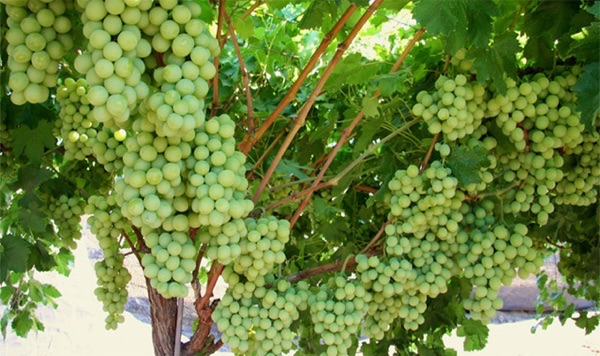How to Grow Grapes
A guide to growing your own grapes
Planting your own grapevine can be a fun undertaking and yield delicious rewards! Many local nurseries sell varieties such as red Flame Seedless or Crimson Seedless, green Thompson seedless or black Concord grapes for home growing. Many people often wonder how to grow grapes at home and how they can go about planting their favourite Sun World grape varieties. All of Sun World’s branded varieties are exclusively grown on our farms or those of licensed growers around the world. However, we are pretty well-versed in growing all varieties of grapes and happy to share some helpful tips to consider when planning, planting and caring for your grapevine:

Climate
Before taking up grape growing, it’s important to consider the environment they thrive in. Grapes generally require a hot and dry climate and are successfully grown in areas where the temperature range is from 15-40˚C. The climate should experience fairly mild winters, little humidity and limited annual rainfall. If your home is not in this climate, grapes may not grow well.
Soil
Soil is what will provide your grapevine with the nutrients it needs to grow. While grapes tolerate a fairly wide range of soil chemistry and conditions, there are a few things you can do to give your grapes the best soil possible:
- Prior to planting, conduct a pH test with a commercial testing kit (available from nurseries). A pH of 5.5 – 7.0 is generally recommended for grapes.
- Drainage is a very important part of planting grapes. To test your soil, dig a 30x30x30cm hole, fill it with water and allow it to drain for 30 minutes to an hour. Refill the hole with water and let it stand. If it has drained within 24 hours, your soil drains well enough to support healthy grapevines. If not, it may be too dry.
- As far as soil types go, sandy loam, silt loam and clay loam drain well, contain nutritious organic matter and lie within the preferred pH range.
Planting
The best time to plant grapevines is in early spring. When choosing where to plant, it’s important to remember that roots will grow about 1-2m from the base. Therefore, a grapevine should be planted with a gap of 2.5m between it and any other plant.
Watering
When grapevines are young, proper watering is essential. Newly planted grapes need immediate watering to minimise transplant shock. Throughout the first growing season, new vines should be watered at least weekly in the absence of rainfall. Water should be sufficient to wet the soil 15-25cm beneath the surface (3-4 cups usually).
Fertilizing
When it comes to growing your own grapes, you’ll need to keep track of whether or not your grapevine is getting adequate nutrients. You can do this by checking its leaves. Dark green leaves are good. If the colour seems to be fading, add fertiliser. You can use store-bought fertiliser, or your own compost.
Trellis
As your grapevine starts to grow, building a trellis will be very important. A trellis will help to support the plant’s natural desire to climb. Teaching your vine to follow a trellis is necessary and will take a lot of patience.
Pruning
Pruning a grapevine is important for grape growing. Letting the vines continue to grow without pruning will cause them to produce little fruit. In your plant’s first growing season, trim back most of the shoots leaving only two to four to grow. Over time, continue to prune branches that have already produced fruit. Pruning during spring is recommended.
Harvesting
A good way to determine whether or not grapes are ready for harvest is to sample them! A grape’s sweetness and flavour is the true test for maturity. Ripe grapes should taste sweet, flavourful and mildly acidic. As another option, ready-made kits that help you determine the ripeness of your grapes are available from nurseries.
We hope these pointers help you to cultivate thriving, beautiful grapevines of your own! With the right kind of care and a whole lot of patience, you’ll be able to enjoy grape growing at home for years to come.
